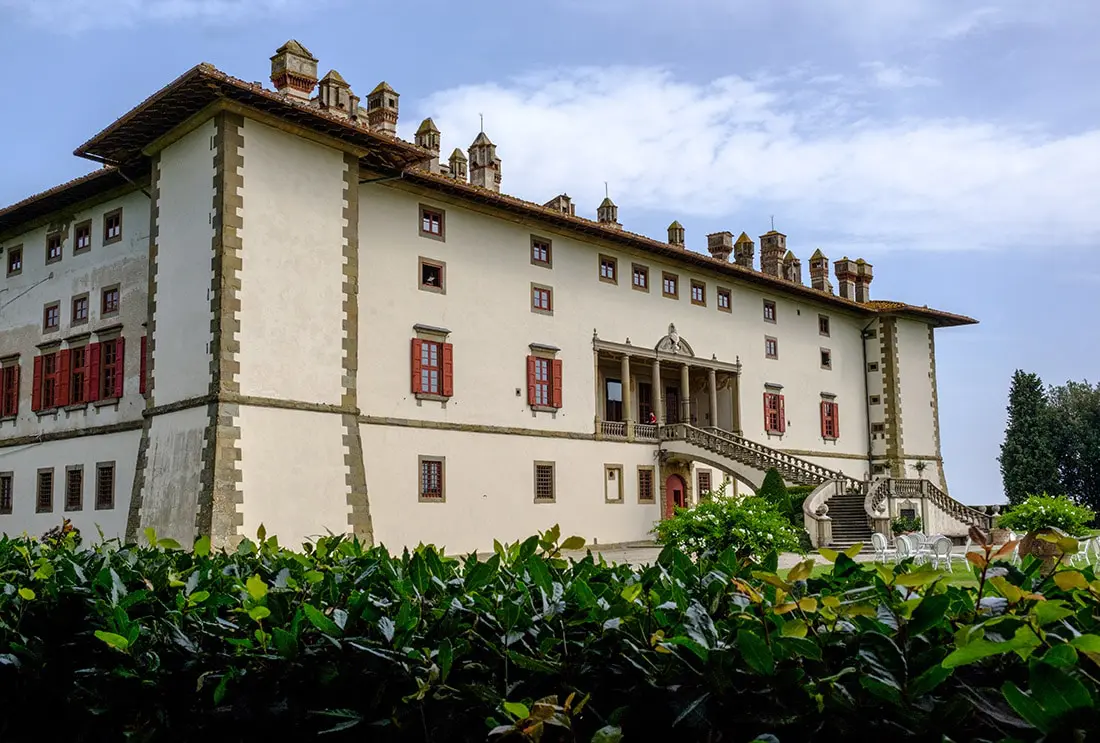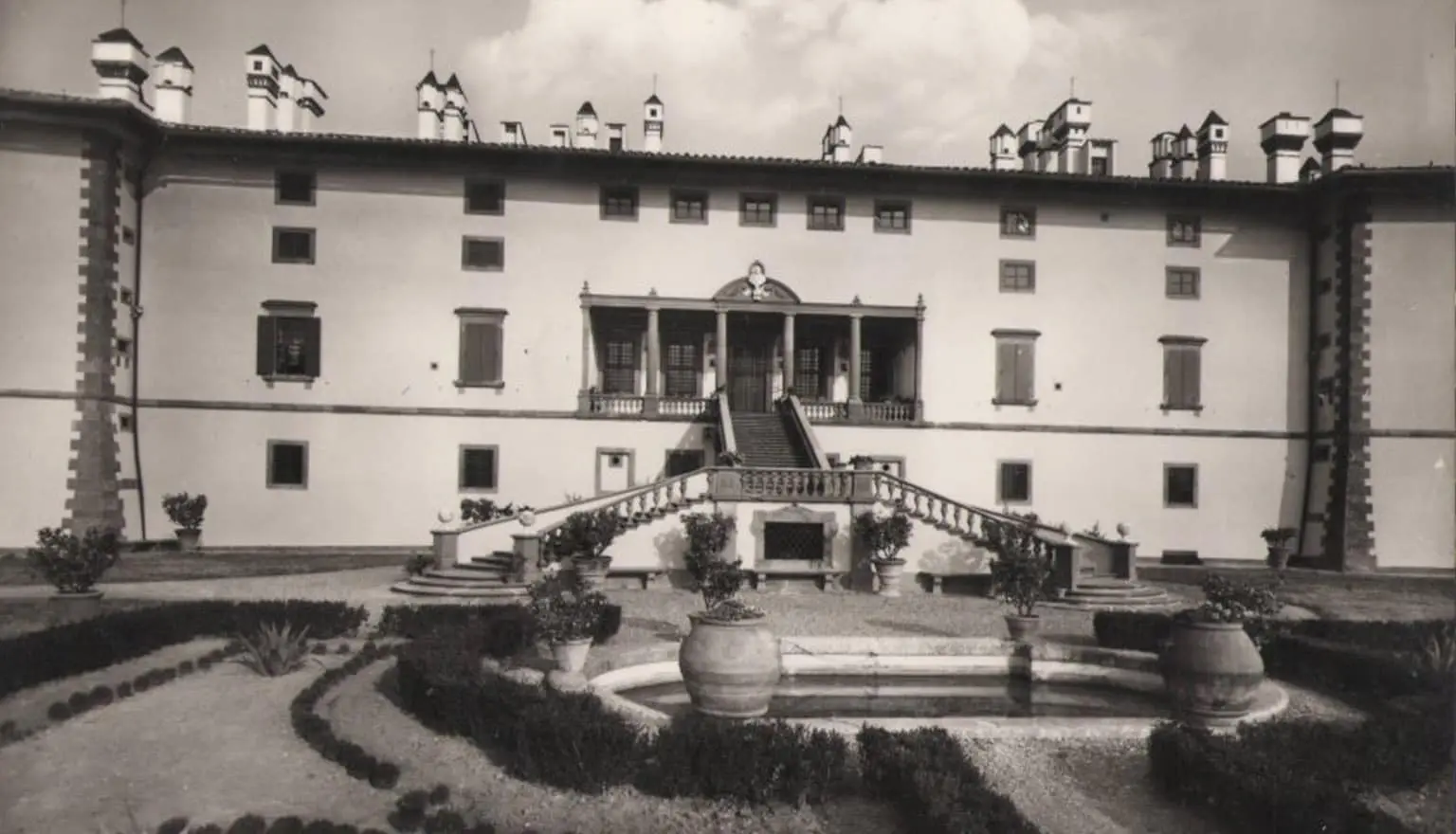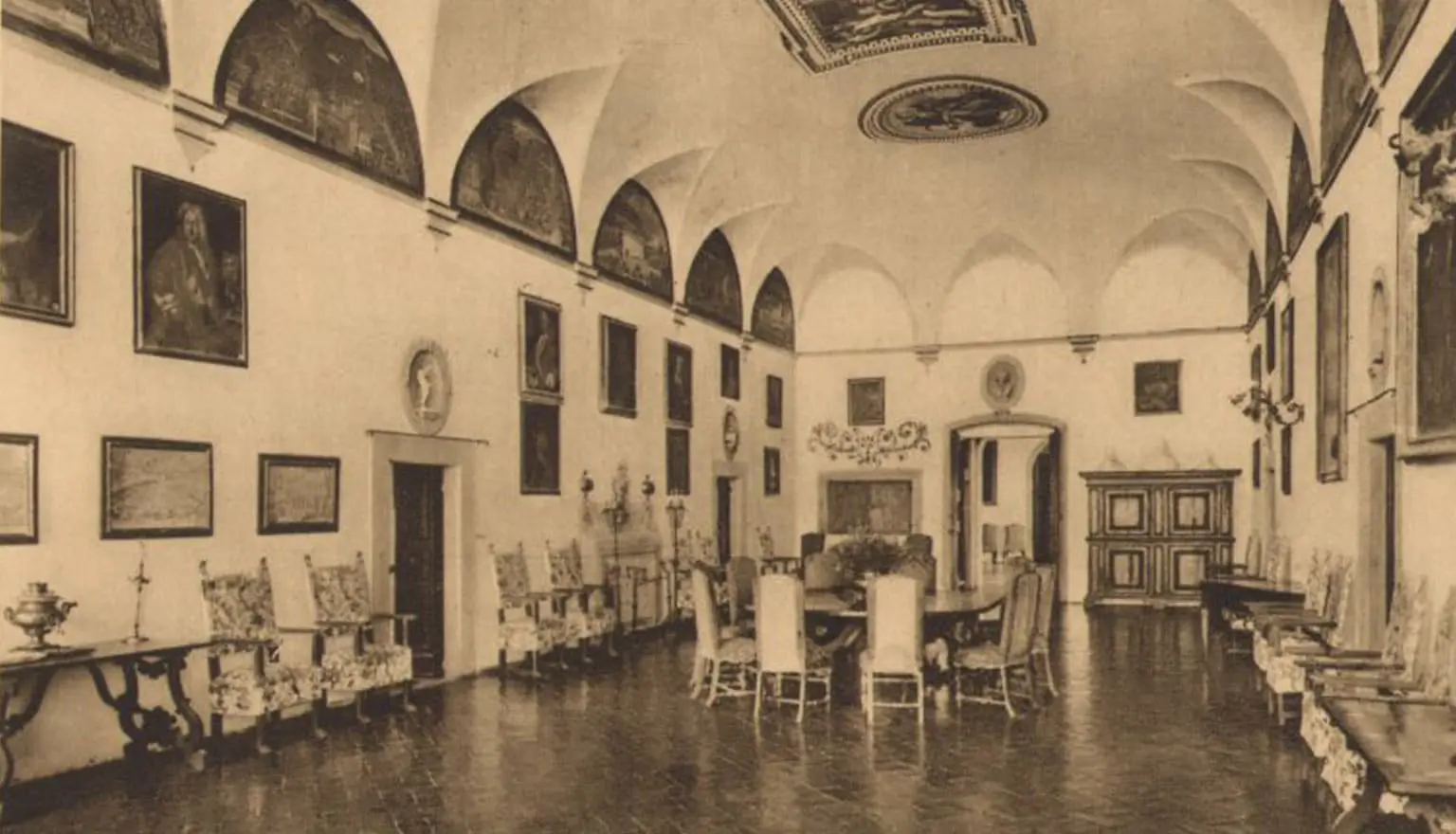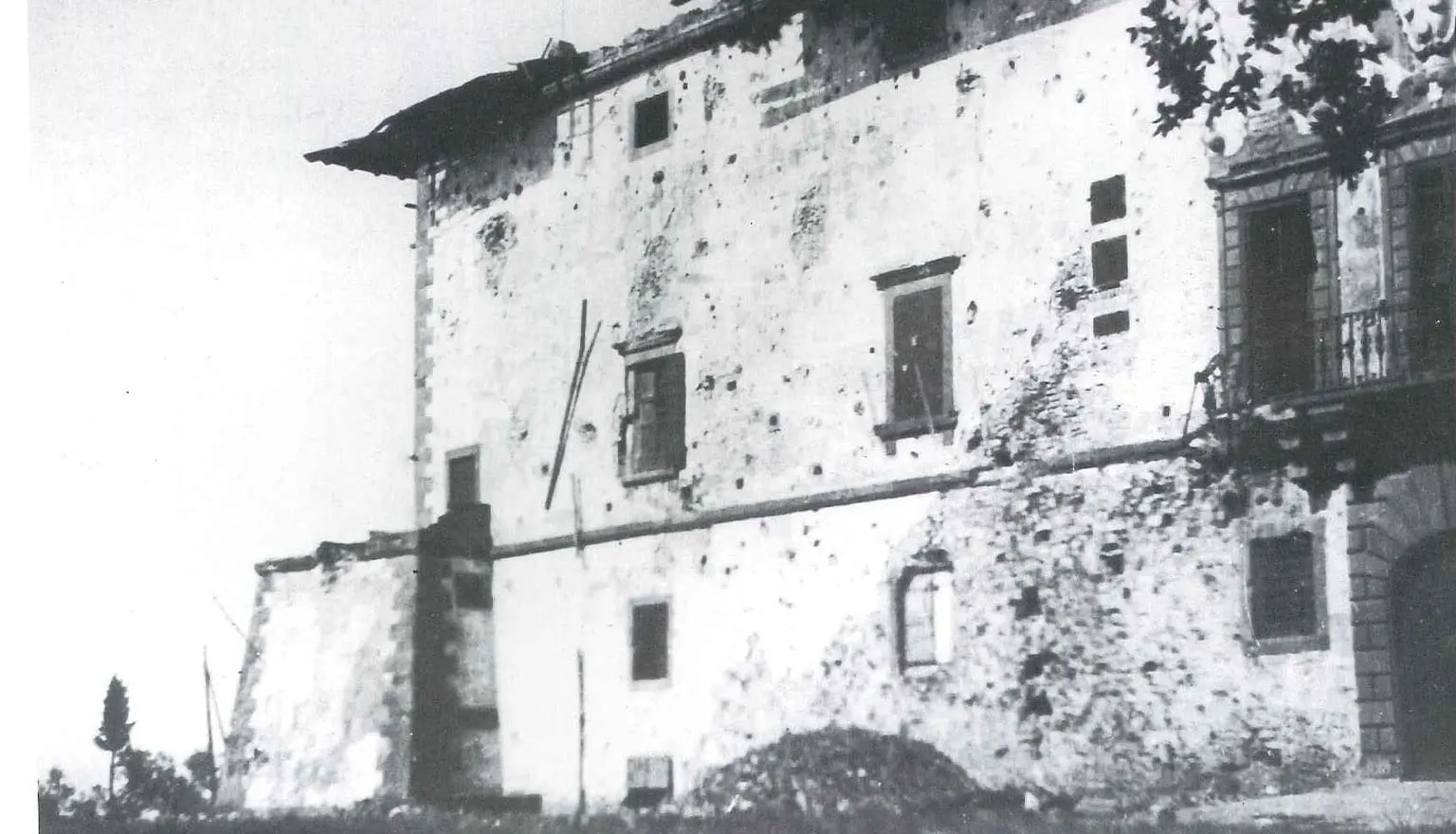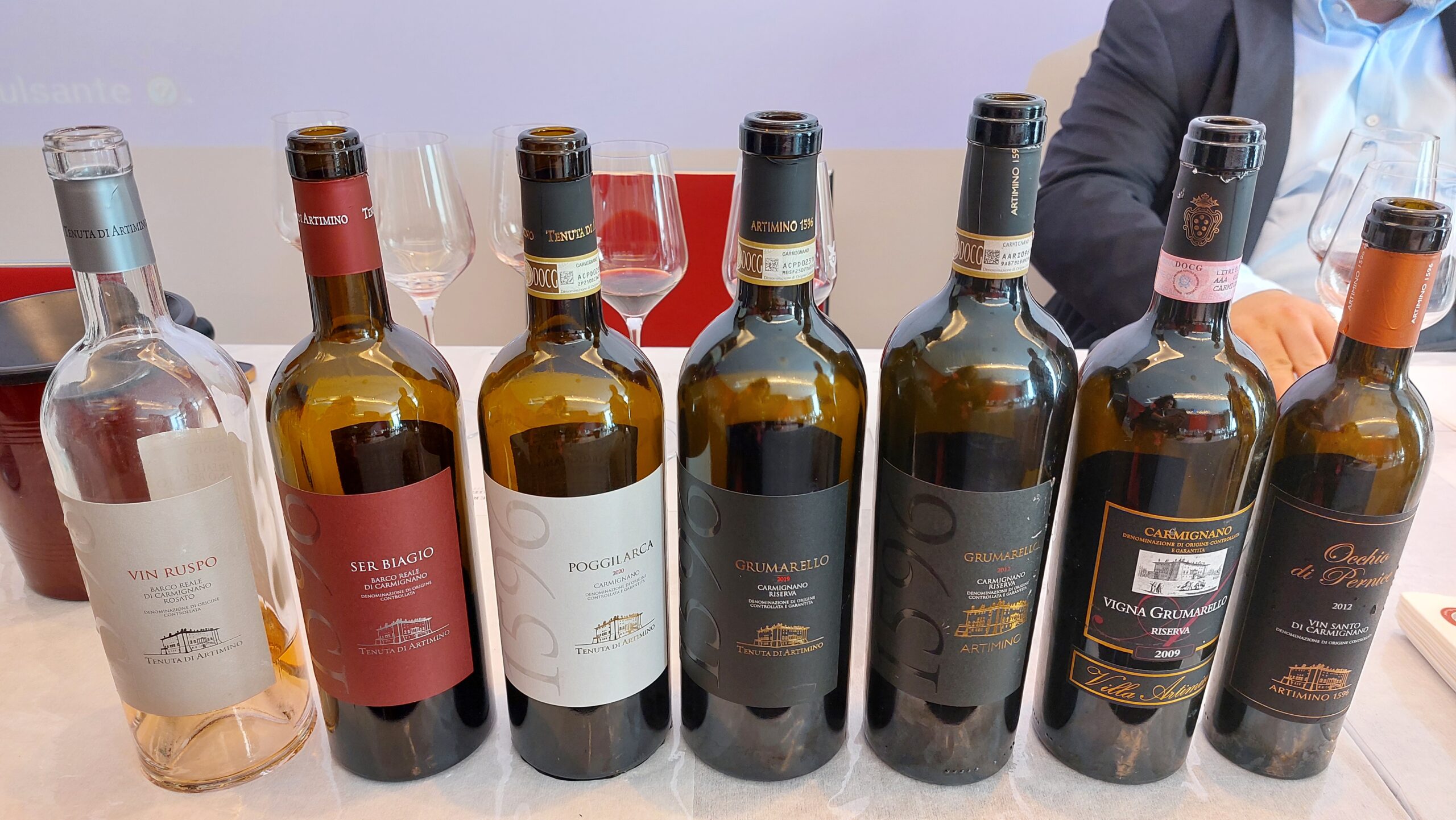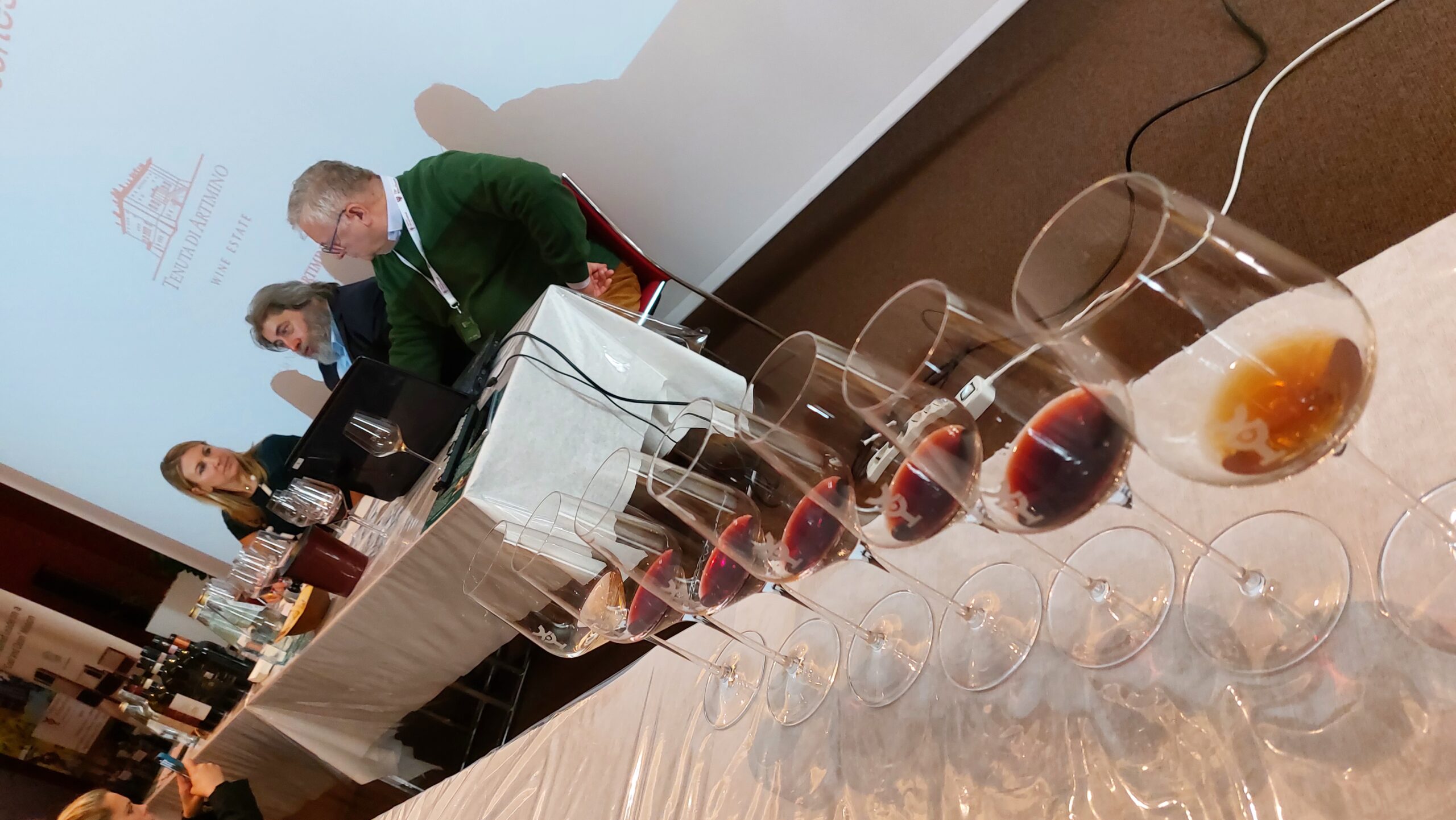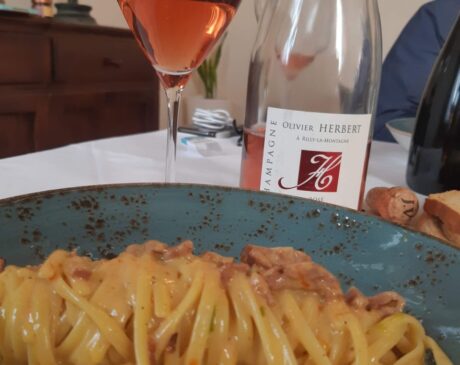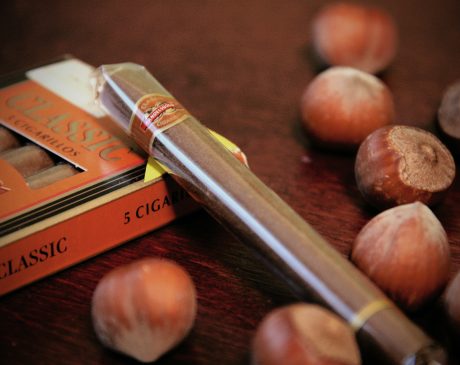Artimino Estate: UNESCO Heritage Jewel since 2013

Artimino Estate, a rare beauty jewel, UNESCO Heritage since 2013
By Carol Agostini
The Olmo Family and the Estate’s History
Since 1989, the Artimino Estate has been the residence of the Olmo family, a place where wine and oil production have roots dating back to the 18th century. Its 700 hectares immerse visitors in the Tuscan countryside, embracing the renowned Medici Villa “La Ferdinanda,” a jewel erected in 1596 and now a UNESCO heritage site. Adjacent to this splendid villa stands the Tenuta di Artimino hotel, part of the Meliá Collection, and the renowned Biagio Pignatta restaurant, celebrated for its interpretation of Tuscan cuisine.
Located near Florence and other fascinating art cities in the region, the estate overlooks the medieval village of Artimino. Here, viticulture is managed responsibly, blending advanced winemaking technologies in the cellar to support the natural vocation of the land. This area boasts a millennia-old winemaking history, beginning with the Etruscans and continuing with the de’ Medici family. Carmignano, in particular, played a key role in Cosimo III’s decree in 1716, considered the oldest oenological “discipline” in the world.
The love for wine in Artimino has deep roots, tracing back to the Etruscan era. In the 17th century, the Medici family perpetuated this tradition, making Carmignano wines, particularly those of Artimino, among the most esteemed of the time. In 1716, with Cosimo III’s edict, a document was drafted defining the production boundaries of these wines, almost acting as a set of rules and classifying them as “wines fit for shipping,” ideal for exportation due to their longevity and quality.
Since 1596, Artimino has been cherished by the Medici, especially by Ferdinando I, who, in a letter to his wife Cristina di Lorena dated January 19, 1596, wrote: “Today I was in Artimino, and believe me, Your Highness, I found a spring.” In just four years, based on the design by the famous architect Bernardo Buontalenti, Villa La Ferdinanda emerged, also known as Villa dei Cento Camini, forever becoming the epitome of a countryside residence.
Artimino is undoubtedly the birthplace of Carmignano wine. For instance, the works around the Villa in 1680, commissioned by Cosimo III de’ Medici, led to the establishment of the first set of regulations ahead of its time. In the cellars of the Villa, within the estate’s ancient archive, documents related to vineyard work and rural life from that era are still preserved.
Who was Cosimo III de’ Medici?
The Long Winemaking Tradition of Carmignano
Cosimo III de’ Medici (1642-1723), the penultimate Grand Duke of Tuscany, had a clear vision regarding the protection of the quality and reputation of Tuscan wines, which were already highly esteemed. This sovereign comprehended the economic importance of wine for the lands under his rule.
On November 29, 1704, he issued a text of 84 pages known as the “Renewal of laws on wine, butchering, taxes, transporters,” which compiled laws on wine sales and circulation. Dissatisfied with the results, the following year, on September 25, 1705, he revoked the recently promulgated law, replacing it with the “Moderation of the new law on wine,” aiming to “further facilitate wine trade.”
This new law allowed “landowners to freely purchase wine from farmers for sale or to settle debts, and farmers could bring their wine to Florence and trade it freely.”
Cosimo III de’ Medici’s significant attention to the wine industry, coupled with his modern vision in this sector, is further highlighted by the establishment, in July 1716, of a new congregation dedicated to wine trade.
On September 24 of the same year, the delegates of this congregation issued the “Edict on the delimitation of the boundaries of the four regions Chianti, Pomino, Carmignano, and Val d’Arno di Sopra.” This document, after delineating the boundaries of these four regions, seems to establish the geographical indication of the wine by stating that only wines produced and obtained within these boundaries could be “marketed as wines of Chianti, Pomino, Carmignano, and Val d’Arno di Sopra.”
In detail, regarding the Carmignano wine in the Edict of 1716, it identifies, in line with current specifications of DOC and DOCG regulations, the “Zone of grape production,” ranging “from the Muro del Barco Reale near the Furba River, along the Ceoli Road that leads from the river to Bonistallo; then to the Villa of Mr. Marchese Bartolommei, up to the Muro del Barco Reale near the Arzana Gate.” These provisions, anticipating by 246 years, 9 months, 2 weeks, and 4 days the Desana law of July 12, 1963, which gave rise to the current system of Controlled Denominations of Origin, constitute the first references to Denominations of Origin and related regulations”.
Who was Giuseppe Olmo?

Giuseppe Olmo and Fausto Coppi, article: Artimino Estate: UNESCO Heritage Jewel since 2013, photo from the internet
Passion for Artimino
On a morning in 1924, an observer noticed Giuseppe Olmo returning from school, carrying his books tied to his bicycle frame. It was an era of great champions like Binda, Guerra, Bini, and Bartali. Olmo, with exceptional talent, achieved increasingly brilliant sporting results, earning a call-up to represent Italy at the 1931 World Championships in Denmark and the 1932 Olympics in Los Angeles. His successes were numerous, culminating in the historic Hour Record of 1935, setting a new record with 45.090 kilometres.
World War II ended his sporting career, but it didn’t quell his entrepreneurial spirit and passion for cycling. After hanging up his bicycle, he began producing bicycles at the Celle Ligure factory. After the war, he expanded his production to include tyres and tubulars, creating from scratch companies that today represent global excellence.
The Olmo Family: Continuity and Values
Annabella Pascale and Francesco Spotorno are the third generation carrying forward Gepin’s legacy, leaving the family with timeless values: the solidity of the family, the importance of work, long-term perspective, and respect for the land as a refuge and source of sustenance.
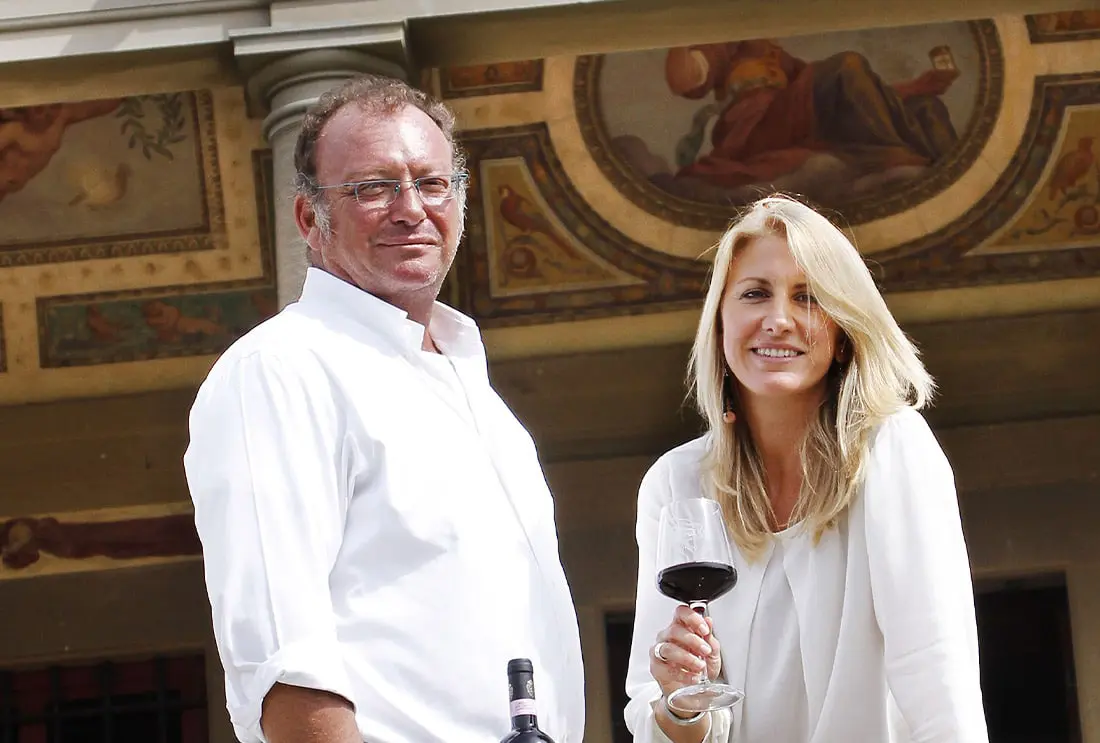
Annabella Pascale and Francesco Spotorno, article: Artimino Estate, a jewel of UNESCO Heritage since 2013, photo from the internet
Giuseppe Olmo, known as Gepin, acquired the Artimino Estate in the ’80s, attracted by the love for the Tuscan countryside, the connection with the land, its history, and the beauty of the landscapes. Aware as both a man and an entrepreneur, Gepin understood that no one could ever deprive them of that heritage, while businesses could move elsewhere, and conflicts could compromise production.
Currently, the Artimino Estate represents not just a residence for the Olmo family, but a place to protect, a treasure to enhance:
“For us, it’s a great honor and a great responsibility to take care of something so dear to our grandfather and our family. A project aimed at quality and beauty, at the conservation of the territory, at the promotion of a fascinating and rich product, like our wine.” – Annabella Pascale, CEO and General Manager
The new management of the Artimino Estate has outlined a strategic project that includes new protocols for grape processing and, probably, new wines, as well as significant work to enhance the extensive wooded areas and olive groves of the company. Annabella, who firmly believes in the power of the territory and has long been active within the Consortium, hopes that more and more producers in the area will join forces to enhance and promote this small DOCG (Controlled and Guaranteed Denomination of Origin) that has much to offer to the world of oenology.
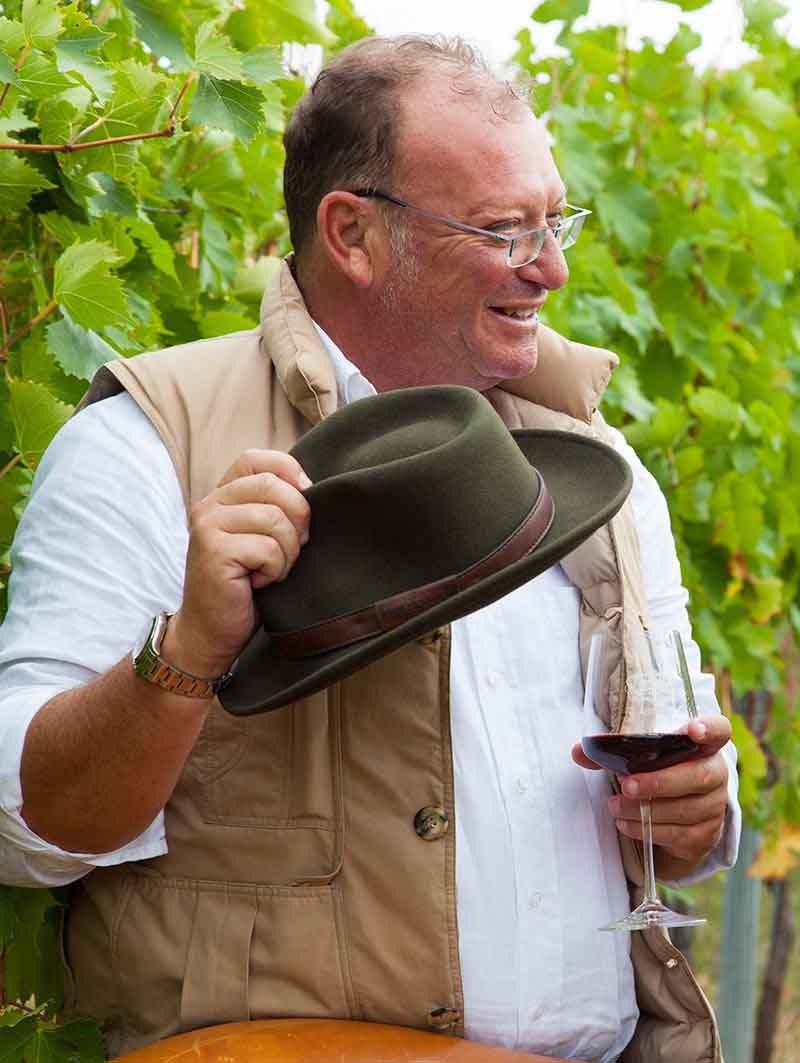
Artimino Estate, a jewel of UNESCO Heritage since 2013, photo from the internet by Francesco Spotorno
In the first 10 years of this new direction, the company has significantly improved the management of the vineyards, focusing on quality, and has achieved significant results in the cellar, producing Carmignano wines that reflect the territory and are of high quality. Now it’s time to aim for new goals through significant investments both in oenology and in viticulture. My family feels the obligation to further grow and highlight the Artimino Estate in its historical role, dating back to the time of Ferdinando de’ Medici.
It’s also easy to think of Caterina De’ Medici who, becoming queen of France, introduced Cabernet to Carmignano, still called “French grape” today, making it mandatory to regulate the use of this variety from 10% to 20% in the blend. The goal is to further enhance the entire area of Carmignano, according to the idea of Annabella Pascale and her family, “growing the entire region with Artimino, small but of great quality” (the area has one of the highest percentages of awards and recognitions for producers in Italy, demonstrating the potential of the territory).

Article: Artimino Estate, a jewel of UNESCO Heritage since 2013, photo from the internet by Annabella Pascale
Changes at the Estate
Starting from 2022, the renowned oenologist Riccardo Cotarella, along with his team, joined the oenological management of Artimino, dedicating his commitment to achieving the most excellent interpretation of wines from a land highly dedicated to viticulture.
Who is Riccardo Cotarella?
Riccardo Cotarella has innovated and perfected the role of a global oenologist and flying winemaker, advising numerous wineries worldwide. His approach focuses on the uniqueness of terroir and the individual characteristics of each wine, avoiding uniformity in terms of taste. The “Der Feinschmecker” award celebrates his extraordinary expertise and creative work in the global wine scene.
As President of Assoenologi and co-president of the Union Internationale des Oenologues, Cotarella is also a producer with Famiglia Cotarella, a company he founded with his brother Renzo and now run by their daughters Dominga, Marta, and Errica. He is considered one of the most influential oenologist consultants not only in Italy but internationally. The “Wine Awards 2023” conferred in Hamburg by “Der Feinschmecker”, a prestigious German food and wine magazine, is a significant acknowledgment of his career and Italian oenology as a whole.
Cotarella feels honored by the award, considering it an encouragement to further contribute to the world of wine and oenology. He deems it essential to impart knowledge, especially in a period like the present one. He emphasizes the importance of a scientific approach in the industry and is committed to sharing this perspective, particularly with young colleagues. The oenologist underscores the need for rigor and method, combined with passion, to excel in oenological work. In the current harvest, complex due to adverse climatic conditions, Cotarella highlights the importance of meticulous technique in ensuring superior quality grapes that will yield excellent wines.
At the 2023 Merano WineFestival, the Artimino Estate Masterclass “The Carmignano of Artimino Estate: from the Medici to Champion Giuseppe Olmo”, conducted by Annabella Pascale and journalist Mauro Giacomo Bertolli, vintages in tasting:”
• Vin Ruspo – Barco Reale di Carmignano DOC Rosato 2022
The Sangiovese, Cabernet Sauvignon, and Merlot grapes that compose this rosé come from vineyards cultivated on loamy-sandy soils, enriched with good percentages of clay, at an average altitude of 135 meters above sea level.
During the winemaking process, entirely carried out in steel tanks, the grapes underwent a pre-fermentation maceration of about two hours. Subsequently, the wine was aged on its own noble lees for two months.
Characterized by a light salmon pink color, the Vin Ruspo 2022 presents a delicate and refined olfactory bouquet rather than intense: it reveals fruity and fresh hints of wild strawberries, red currants, loquat, and yellow peach, accompanied by elegant floral notes of red rose.
The taste is fresh and lively yet simultaneously soft, with an enveloping and persistent structure, providing a long-lasting gustatory persistence.
• Ser Biagio – Barco Reale di Carmignano DOC 2022
The grapes are manually harvested and immediately transported to the cellar for vinification. After crushing, fermentation begins with a long maceration in stainless steel tanks, maintaining the temperature between 25°C and 30°C. During this process, which lasts about 20 days, daily pump-overs and delestage every 3 days are performed.
The duration of the pump-overs is progressively reduced to avoid excessive extraction of unwanted tannins. Subsequently, the wine matures in steel for 6 months. It presents an intense ruby red color. On the nose, it stands out for its clarity and immediacy. Notes of ripe cherry emerge, accompanied by nuances of sweet spices, followed by hints of wild strawberries and violet. On the palate, it is decisive and characterized, a fresh wine but with evident substance. It concludes in a satisfying way, with delicate tannins.
• Poggilarca Carmignano DOCG 2020
This Carmignano DOCG is the result of Sangiovese, Cabernet Sauvignon, and Merlot grapes from vineyards located on slopes at an average altitude of 135 meters above sea level. These soils are characterized by loamy and sandy elements, with a significant presence of clay.
After fermentation in steel tanks, the wines are aged in wood: Sangiovese matures in 30hl barrels, while the two Bordeaux varieties spend time in new and second-passage barriques.
Of an intense ruby color, the Poggilarca 2020 opens on the nose with deep and refined notes of cherry, sour cherry, and pomegranate. After a short aeration, floral hints of violet emerge, accompanied by candy, powdered coffee, and a slight trace of vanilla, emphasizing the delicate use of wood. An elegant balsamic note runs through the whole, providing verticality to the bouquet.
The wine is soft and full, supported by a well-balanced freshness and dense and sweet tannins, still slightly vigorous but pleasant. Despite its austere personality, this Carmignano DOCG surprises for its slender and graceful drinkability, maintaining a rich and complex structure with a long persistence.
• Grumarello Carmignano Riserva DOCG 2019
The Sangiovese, Cabernet Sauvignon, Merlot, and Syrah grapes selected for this Reserve come from vineyards positioned at an average altitude of 110 meters above sea level, cultivated on soils rich in silt and sand, also enriched by a good presence of clay. After vinification in steel, the Grumarello 2019 spent 24 months in large barrels and barriques, where it also completed malolactic fermentation.
Of an intense ruby color, this Carmignano DOCG Reserve opens with hints of ripe cherry and touches of bitter red citrus, joined by floral notes of violet and light nuances of underbrush; the bouquet enriches with a fascinating selection of spices such as vanilla, black pepper, and licorice.
On the palate, it appears rich and juicy, with a soft structure and a balanced equilibrium supported by a clear but well-amalgamated freshness and lively, high-quality tannins.
Overall, the Grumarello 2019 is an agile and dynamic wine to savor, despite its significance, with a persistent closure that invites the next sip, ending with a pleasant mouth finish.
• Grumarello Carmignano Riserva DOCG 2012
Grapes are harvested only when they reach perfect ripeness. Fermentation occurs in temperature-controlled steel containers with a maceration on the skins that lasts for three weeks. Subsequently, the wine matures for two years in Slavonian oak barrels, followed by an additional bottle aging period for a year. The ingredients are simple, as is the recipe, but the excellence of the result is confirmed by the Carmignano Riserva “Grumarello” produced by Tenuta di Artimino.
This red wine is robust and full of character, perfect for accompanying dishes of red meat or game. It’s ideal for a dinner among friends and is unlikely to disappoint expectations.
Its color is a beautiful ruby red with slight garnet reflections. Its aromatic bouquet is elegant, with initial notes of wildflowers that give way to a rich presence of black fruit and herbaceous shades. Finally, hints of tobacco, cloves, and leather emerge. On the palate, it’s warm and rightly tannic, robust, and persistent.
• Grumarello Carmignano Riserva DOCG 2009
Like the other two, it’s an intense and deep wine with scents on the nose and palate that captivate; indeed, it enchanted the entire audience at the tasting. Enveloping like few Carmignano Riservas.
• Vin Santo di Carmignano DOC Occhio di Pernice 2012
The Vin Santo di Carmignano Occhio di Pernice from Artimino is born from the skillful combination of mainly red berry grapes collected in the Carmignano area, in the province of Prato.
Clusters of Sangiovese, Canaiolo, and Aleatico, with a touch of Trebbiano Toscano, Malvasia Bianca Lunga, and San Colombano, are left to dry on reed racks in the vinsantaia for about 4 months. After pressing, the must is placed in caratelli where it ferments and ages for at least 4 years.
The result is a nectar with an amber yellow color. The intense and complex bouquet offers aromas of dried figs, walnut husk, candied apricot, and almond. On the palate, it’s structured and enveloping, with a perfect balance between minerality, sweetness, and freshness.
Excellent to accompany chocolate desserts, it pairs well with aged and pit cheeses. It’s superb to be savored slowly while contemplating its aromas.


